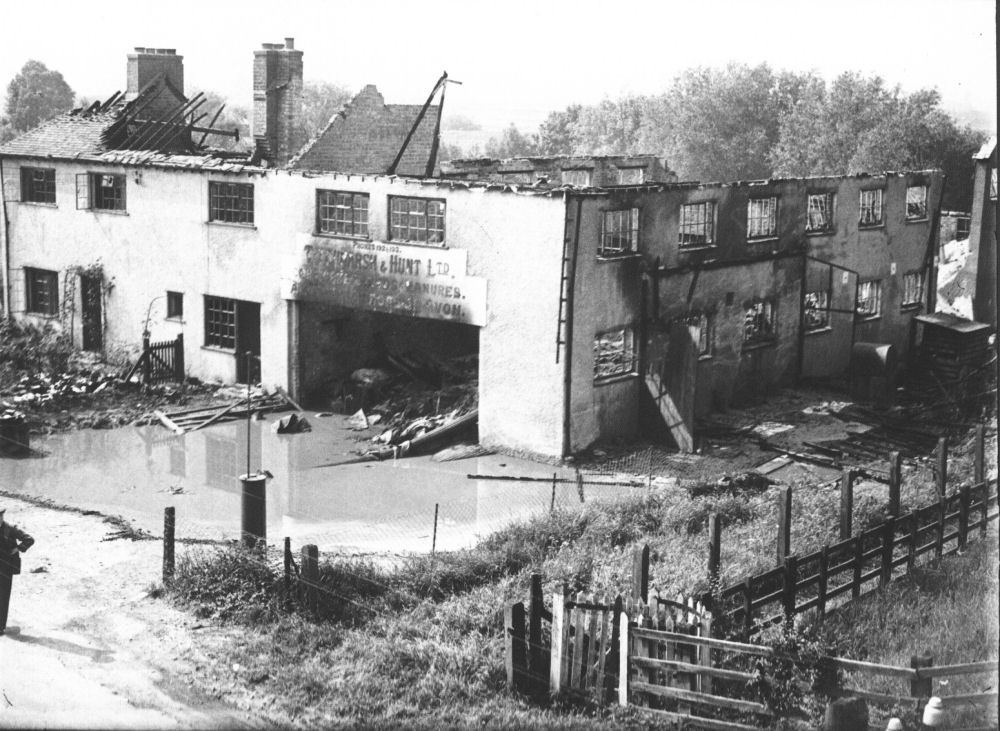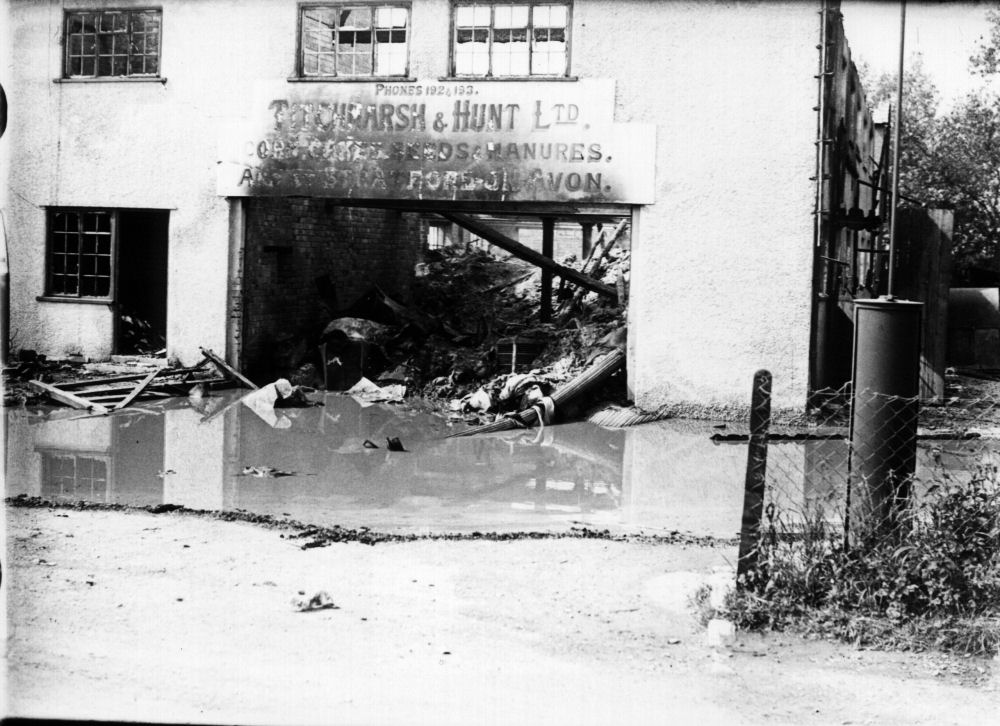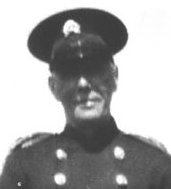| Home . Formation . Equipment . Funding . Local Agreements . Captains . 1897-1933 . Joint Brigade . WW2 . Post War . 1950s . Fires . Gallery | ||||||
|
Titchmarsh
& Hunt 1939
The premises of Titchmarsh & Hunt, corn and agricultural merchants, in Childswickham Road, Broadway were destroyed by fire in the early hours of Wednesday 7th June 1939. The brick building, consisting of a warehouse, garage and office, contained approximately five hundred tons of wheat, maize and other cereals, a quantity of agricultural equipment, three lorries and office equipment. The cost of the damage was estimated to have been between £6000 and £7000. Attached to the main building was a house where the manager, Geoffrey Layton, lived with his wife and two small children. |
||||||
|
|
||||||
 |
||||||
|
That
night Mr Layton left the office just before 11pm, and after having a
glass of milk, went to bed. At about 12.20am the driver of a goods train
on the nearby railway noticed the building was on fire. He stopped his
train, and blew the engine's whistle in an attempt to draw attention
to the fire. The noise woke Mr Layton who, on looking out of the window,
saw flames coming from the warehouse. He wasted no time in getting his
family out of the house and safely onto the road. Then, after phoning
for the fire brigade, he attempted to save what he could from the house.
He was unable to rescue any papers from the office as he could not find
the keys in the darkness. But with the assistance of a Mr Coles, he
managed to remove one of the lorries. By this time the whole property
was well alight.
|
||||||
 |
||||||
|
The
Broadway fire brigade was quickly on the scene with the manual engine,
under their captain Charles Steward. They set the pump into the nearby
Wash Pool brook, on the other side of the railway. There was some delay
as, at first, the suction hose would not reach the water, so the pump
had to be repositioned nearer the brook. Despite the best efforts of
firemen and volunteers on the pump they were unable control the fire
due to the intense heat. The District brigade from Pershore was called,
and arrived on the scene at about 1.10am. Efforts were concentrated
on saving what they could from the house and from the office, from where
they managed to remove the safe. By 2.30am the fire was under control,
but by that time the buildings and most of the contents, including two
of the three lorries, had been destroyed. Two kittens also perished.
Mr Layton expressed his gratitude to the train driver for waking him.
For, without that warning, he felt he and his family may not have escaped
with their lives.
The warehouse, office and garage section of the property was eventually demolished. But the house was rebuilt and still stands near the railway bridge. |
||||||
|
||||||
| The fire at Titchmarsh & Hunts was probably the last one attended by the old manual fire engine as, only three weeks after the fire, the parish council received a letter informing them that a large Gwynne trailer pump had already been ordered for the Broadway brigade. | ||||||
